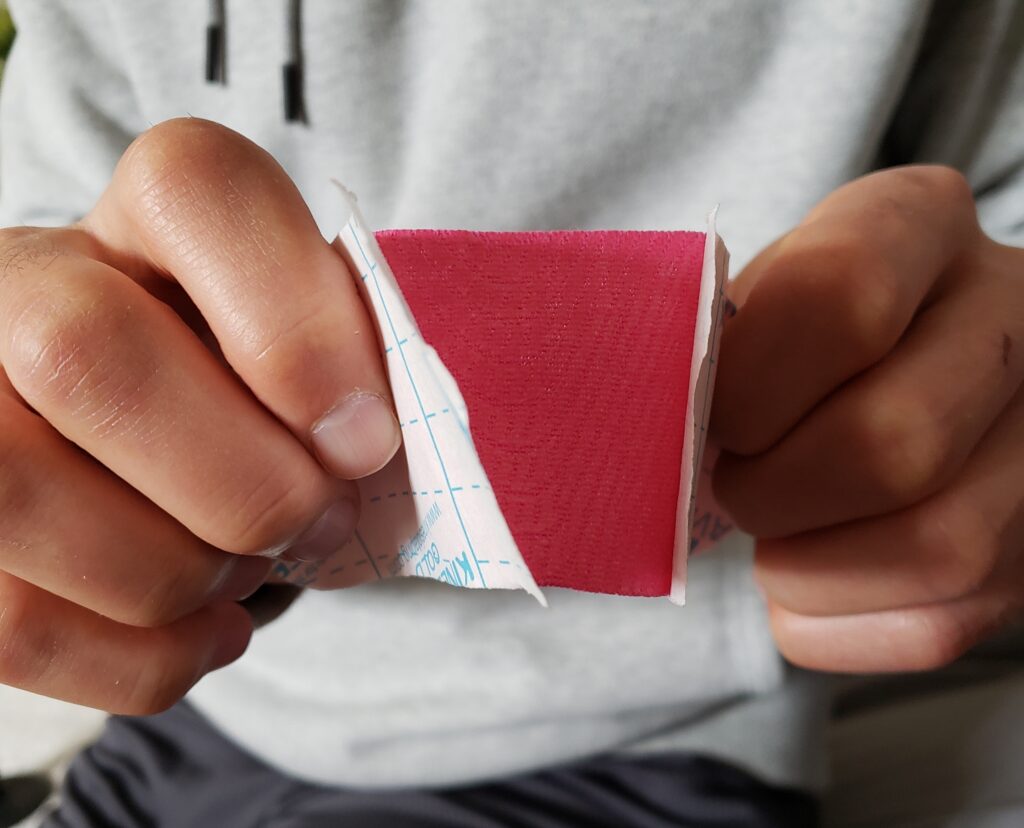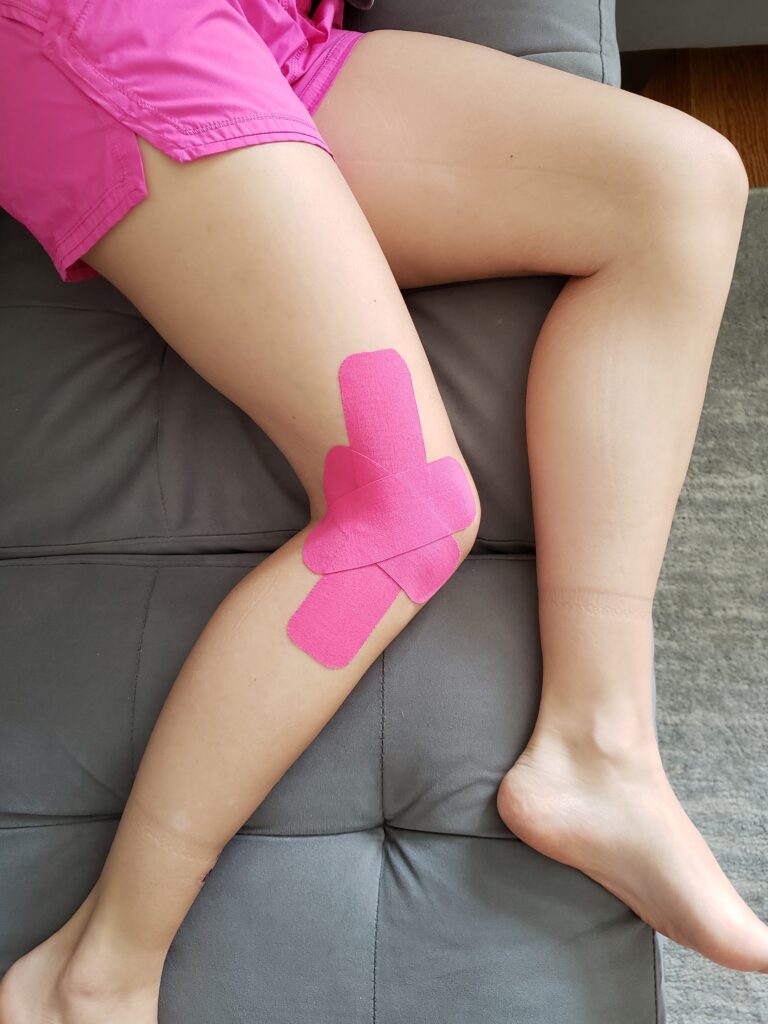Treatment Principles
- Identify and address potential causes (i.e. intrinsic and extrinsic factors)
- Reduce pain
- Strengthen glute med
- Improve kinetic chain control as a whole
- Gradual return to activity
Pain Reducing Tips
- Initial relative rest and ice
- ?NSAIDs – discuss with family doctor
- KT tape – see instructions below
You will likely need a partner to do the tape job. Lie on your unaffected side with knee relaxed down on bed and flexed to 60 degrees. Find your pain site. This will be the central point of your tape job. Cut an I-strip about 6-8 inches long. Rip the paper in the middle of the KT tape (as shown). Without any tension on the tape place the middle portion of the tape over your pain site. Without any tension place the remaining tape down following the line of your leg.


Next cut 2 small I-strips around 3-4 inches long. Rip the paper in the middle of the KT tape. With full tension on the tape place the middle portion of the tape over site of pain. Orient the tape to form an ‘X’ pattern over the pain site. Without any tension on the ends place them down.

- Self-massage of glutes and ITB – not the site of pain – can use a tennis ball or foam roller
- You may still be able to run, bike or hike!! BUT avoid activity that pushes pain past a 2/10 and does not settle within 24 hours
- Potential modifications to keep pain down during rehab
- Slightly increase step width
- Keep hip, knee and foot aligned during activity – prevent knee from ‘turning in’
- Cut back on downhill activities if hiking or running
- Perform activity every other day
- Change activity to pain free swimming, walking, or biking
- If running – increase cadence by 5% and build up to 10%
- Perform strength training and activity on separate days
- Gradually increase activity as pain allows
- Monitor pain response after activity – keep pain below 2/10 – find the sweet spot between no activity and too much
- Wear good supportive running or hiking shoes for activity
***Book with MPT today to start your 1 on 1 individually tailored rehab program to get you back to what you love!***
Resources
Brindle, R. A. (2018). Physiological and Biomechanical Factors Contributing to the Hip Adduction Angle in Female Runners (Doctoral dissertation, Drexel University).
Fairclough, J., Hayashi, K., Toumi, H., Lyons, K., Bydder, G., Phillips, N., … & Benjamin, M. (2007). Is iliotibial band syndrome really a friction syndrome?. Journal of Science and Medicine in Sport, 10(2), 74-76.
Fredericson, M., & Wolf, C. (2005). Iliotibial band syndrome in runners. Sports Medicine, 35(5), 451-459.
Fredericson, M., Cookingham, C. L., Chaudhari, A. M., Dowdell, B. C., Oestreicher, N., & Sahrmann, S. A. (2000). Hip abductor weakness in distance runners with iliotibial band syndrome. Clinical Journal of Sport Medicine, 10(3), 169-175.
Tiu, T., & Craig Van Dien, M. D. Knee overuse disorders.
Meardon, S., & Miller, R. H. A new approach to iliotibial band syndrome in runners.
Meardon, S. A., Campbell, S., & Derrick, T. R. (2012). Step width alters iliotibial band strain during running. Sports biomechanics, 11(4), 464-472.
Miller, R. H., Lowry, J. L., Meardon, S. A., & Gillette, J. C. (2007). Lower extremity mechanics of iliotibial band syndrome during an exhaustive run. Gait & posture, 26(3), 407-413.
Nielsen, R. O., Nohr, E. A., Rasmussen, S., & Sørensen, H. (2013). Classifying running‐related injuries based upon etiology, with emphasis on volume and pace. International journal of sports physical therapy, 8(2), 172.

